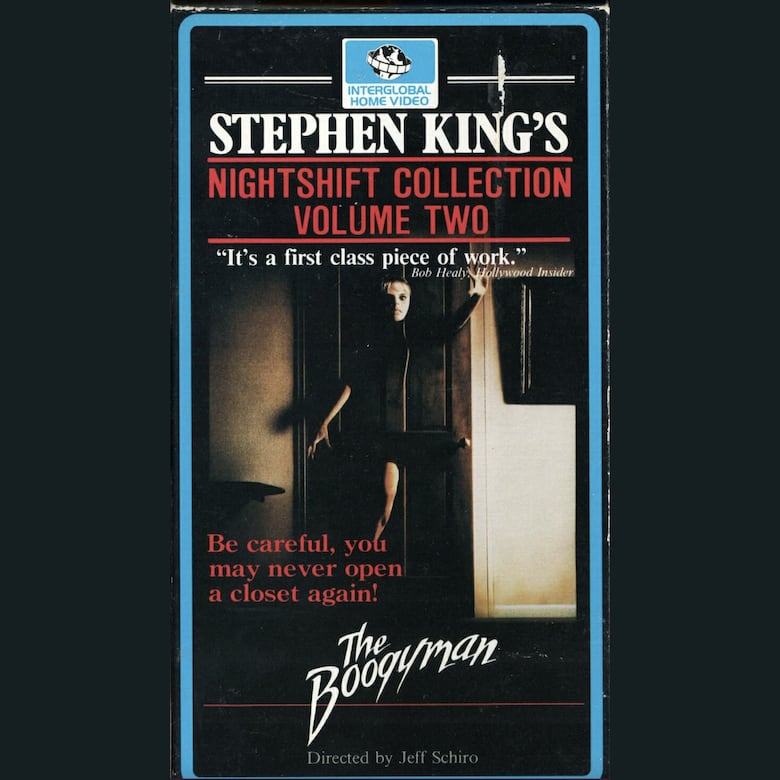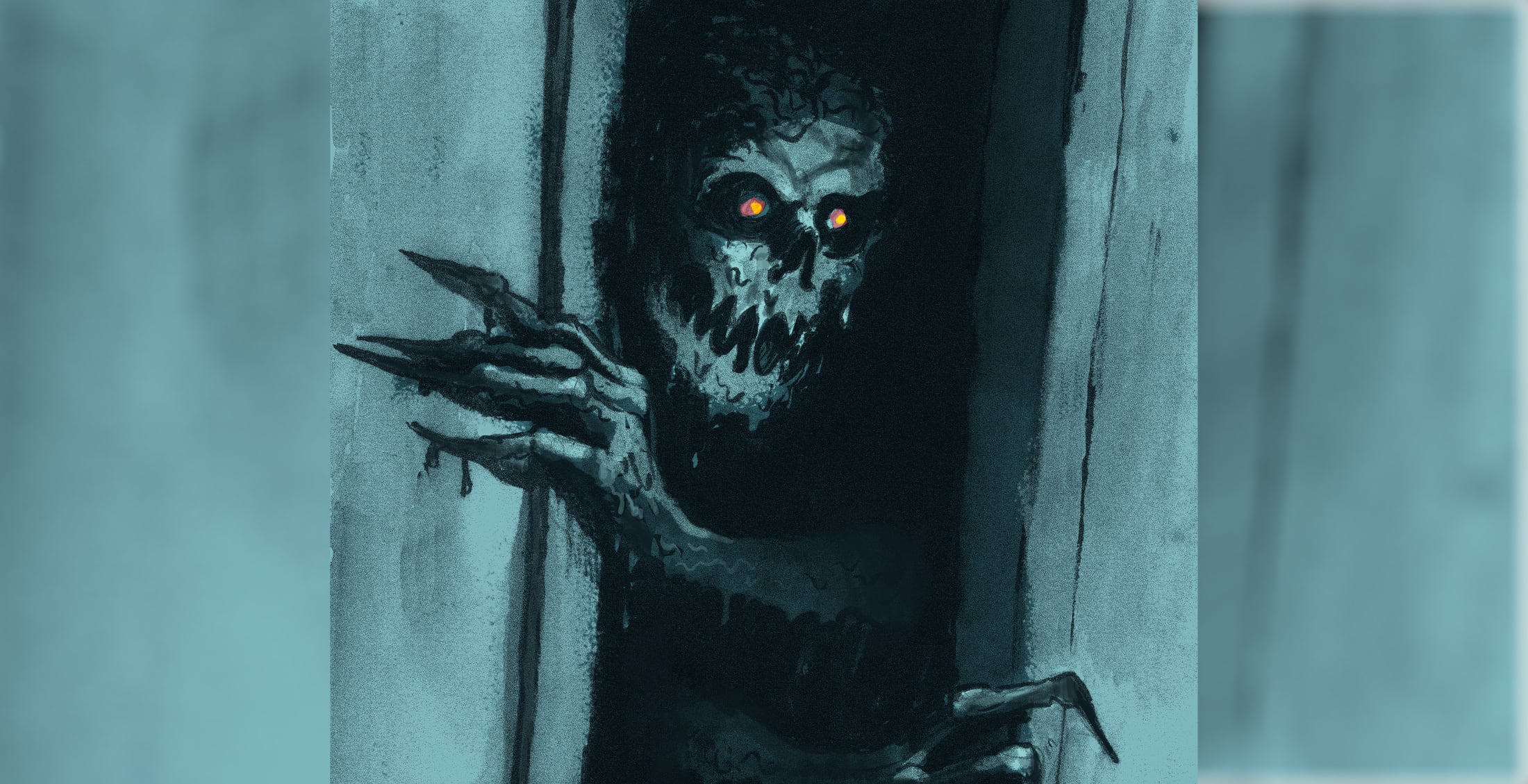Do you have “the chair”? You know the chair. The dumping chair. The detritus chair. The chair that holds onto those clothes that are too dirty to go back in the drawer, but not so dirty as to require being banished to the washing basket? There might be a small collection of books on your chair, too. Little rocks for the cascading waterfall-esque clothes to break upon. Or maybe your cat/dog particularly likes this chair and so you keep it topped up with soft, thick-materialled clothes for them to nap on. Everyone has this chair. It is something that is central to one of the earliest of Stephen King’s stories, The Boogeyman.
And do you, like most other people with this bloody chair, ever half wake in the middle of the night (probably after having watched a horror the night before) and imagine you can see – yes, definitely see – something else sitting on that chair in the half-light? The Creeper, maybe? Our auld pal Freddy? The Christmas Critters from South Park?
Something lingers on that chair while we sleep. It watches us. But do we clean up the chair when morning comes? Tuck it away at the other side of the room? No. Because, when the morning comes we realise we were being ridiculous and why deny FiFi her favourite napping spot just because we can’t handle our horror?
But what if we aren’t ridiculous? What if we’re being watched?
This is what confronts Lester Billings as he regales his trauma to Dr Harper, in what can be considered Stephen’s King’s most powerful story, The Boogeyman (at least of his early career). Let’s dive into the tale.
The Story of Stephen King’s The Boogeyman
(Heavy spoilers ahead!)
Billings has had a shite time of it. Each of his three children has passed away. His nerves are shot. His marriage is on the rocks. And, oh yeah, he’s being hounded by the paranormal entity known only by the name each of his children shouted as they were being murdered, “Boogeyman!”
King’s short (very, very short) tale begins with Billings in the medial office of Dr Harper. Billings comes across as a typical seventies incarnation of the All-American man. He’s gruff, to the point, and stresses that he’s only with Dr Harper because he “has to tell someone”. The weight of the world rests heavy on Billings’ shoulders, and his back is ready to break.
The guilt of his actions, of his typical macho-attitude, has brought his family to ruin. His first two children were forced into their own bedrooms when they were very young – with the excuse of some vaguely outdated parenting technique. Each of them became terrified of their room, and, the closet door that Billings was always convinced he had shut tightly, but always remained ajar after the children’s outbursts.
Each child’s death was explainable. The first was put down as “crib death”, the second, “convulsions”. But by the time of the second infanticide, Billings is convinced that the “Boogeyman” each of them called out in fear of is actually haunting his home.
So he and his wife Rita move. They have a new baby. Life is good. For a year. And then, well, and then Billings starts to notice that the closet door is sitting ajar again. What follows is the most rational and relatable form of cowardice to those that do not have children. For those of you who do, well… best not to judge Billings too harshly.
What makes this story so compelling is that the Boogeyman is framed as not simply being a paranormal entity that happened to like that closet and happened upon Billings’ children. No. It appears that the Boogeyman has been actively hunting Billings and is tormenting him for some unknown reason. The twist at the story’s end (and it has typical seventies vibes in abundance) confirms that this story has never been about Billings children, and always about Billings himself.
If you want to read the full story of Stephen King’s The Boogeyman, find it here.
History of the Story
As this is one of King’s earliest works, The Boogeyman has been well trodden in terms of adaptations. Yet, queerly, remains obscure in the King Pantheon. During one the King Mania phases of adaptations (we are in one now!) it was adapted by Jeff C. Schiro in 1982, to little fanfare.

This is a difficult story to adapt. It is a little over ten pages and works best as a punchy little number within the confines of a larger collection. David Oakes also tried his hand at such an adaptation for the Edinburgh Film Festival, yet, again, this was contained to a short film. Each adaptation is then low on source material to develop a feature length film. Though, there is one coming from 20th Century Fox this year, so, watch this space…
The Boogeyman Explained
Given that Stephen King’s The Boogeyman story was written during the beating heart of the seventies, in an America that many of us would not be able to recognize today, it appears odd that this story would strike such a resonance. Yet, here we are…
One of King’s specialities is being able to relate his own fears and trauma onto the page and relate his story directly to his readers. Given how little is known about his intentions with this story, there is a significant amount of supposition in this analysis. Yet, given how frank King was with how close to home Pet Sematary was to his own fears about losing one of his sons, I don’t feel this is unjustified.
— FOUNDATIONS OF HORROR —
Further explore these subgenres and tropes. more>>
#Capital M Monsters | My House is Scary

The first relatable aspect of Stephen King’s The Boogeyman story is how terrified the father is. This terror comes not only from the very real presence the Boogeyman takes up in his life, but also from the guilt he feel about the loss of his family and his actions during the death of his third child. Toxic masculinity is often used in a buzzword like fashion nowadays, and it hadn’t been invented in the seventies, and yet King, in that ole’ King way, is able to tap into the universality of the modern definition’s meaning. We get plenty of instances throughout Billings’ monologues that would allow us as the reader to categorise him as a bit of a man’s man. Strict with the children, a layer of coldness between his love for his children (for he does love his children) and the affection he allows them to feel. King deftly navigates these emotions within Billings, while relaying the terrible story of his children’s deaths.
Secondly, and equally as devastating, is how King is able to bridge the gap between childhood fears of the dark and adult concepts these fears being in someway nonsense, or something we grow out of. Billings’ fear of the Boogeyman is well founded – it literally killed his children. But his fear is posed to us as being rooted in a childlike uncertainty. It is a relegation of the adult perceptions of the world to the child’s fear of the unknown. Billings is infantilised by his own fear, reduced to running and telling the teacher that he’s scared of the closet and needs someone to reassure him that everything will be okay. It won’t FYI, as Dr Harper proves when he goes into his own closet.
So next time you wake up in the middle of the night and see the Boogeyman sitting on “the chair,” maybe have a think about a wee tidy up in the morning. Often, these creatures can only get us if we believe they can, and you never believe more than when you’re staring at a jumper in the middle of the night that there’s something in your room.
Last Updated on April 5, 2023.


3 Comments